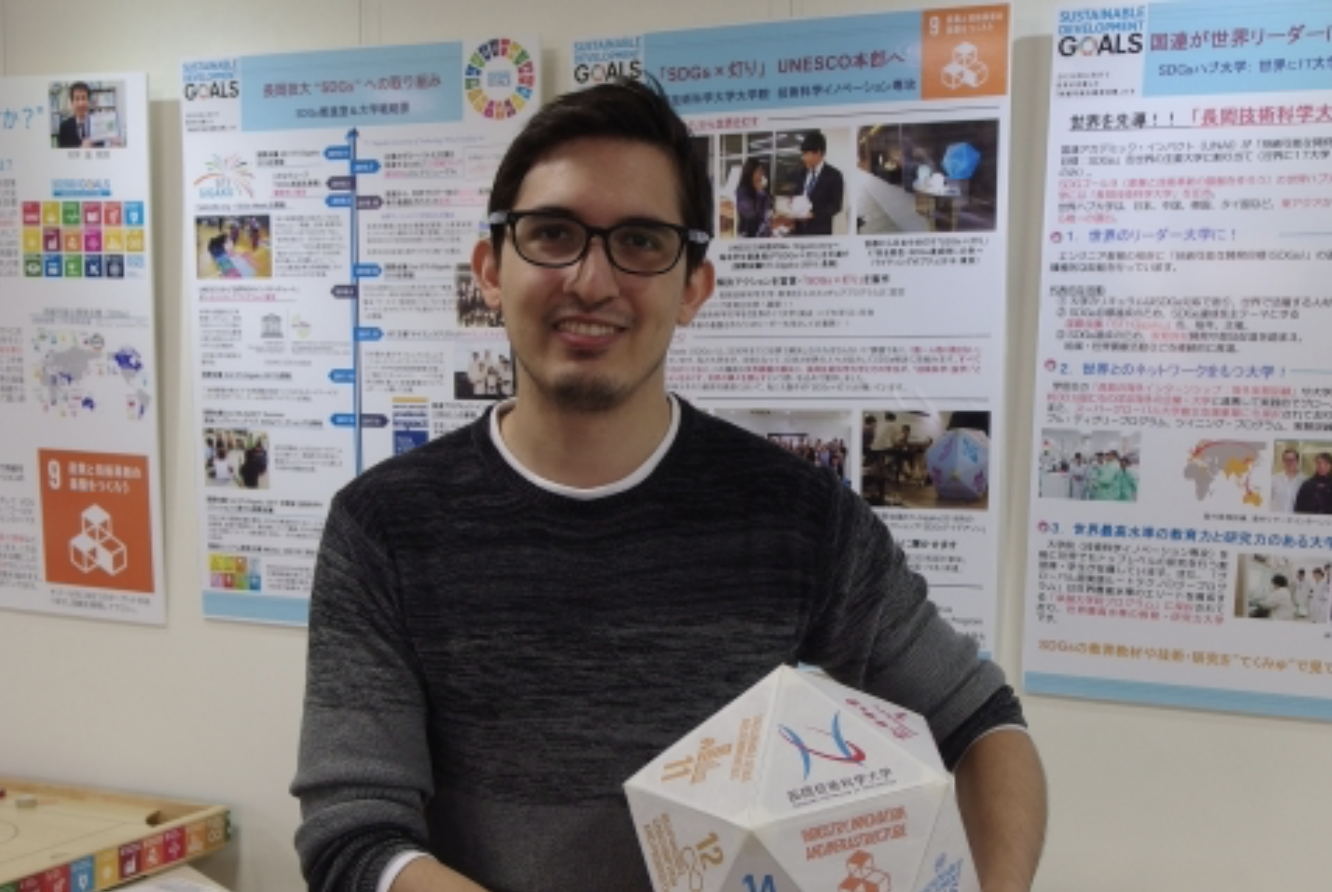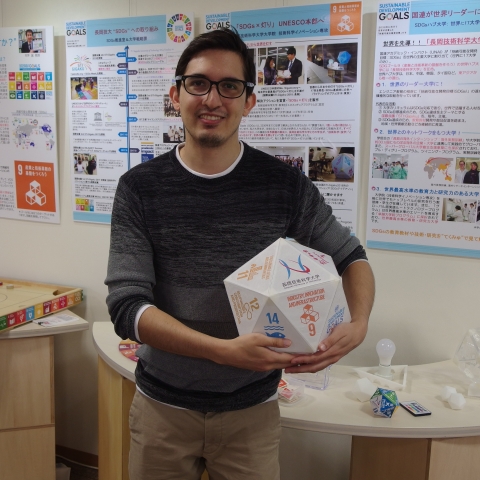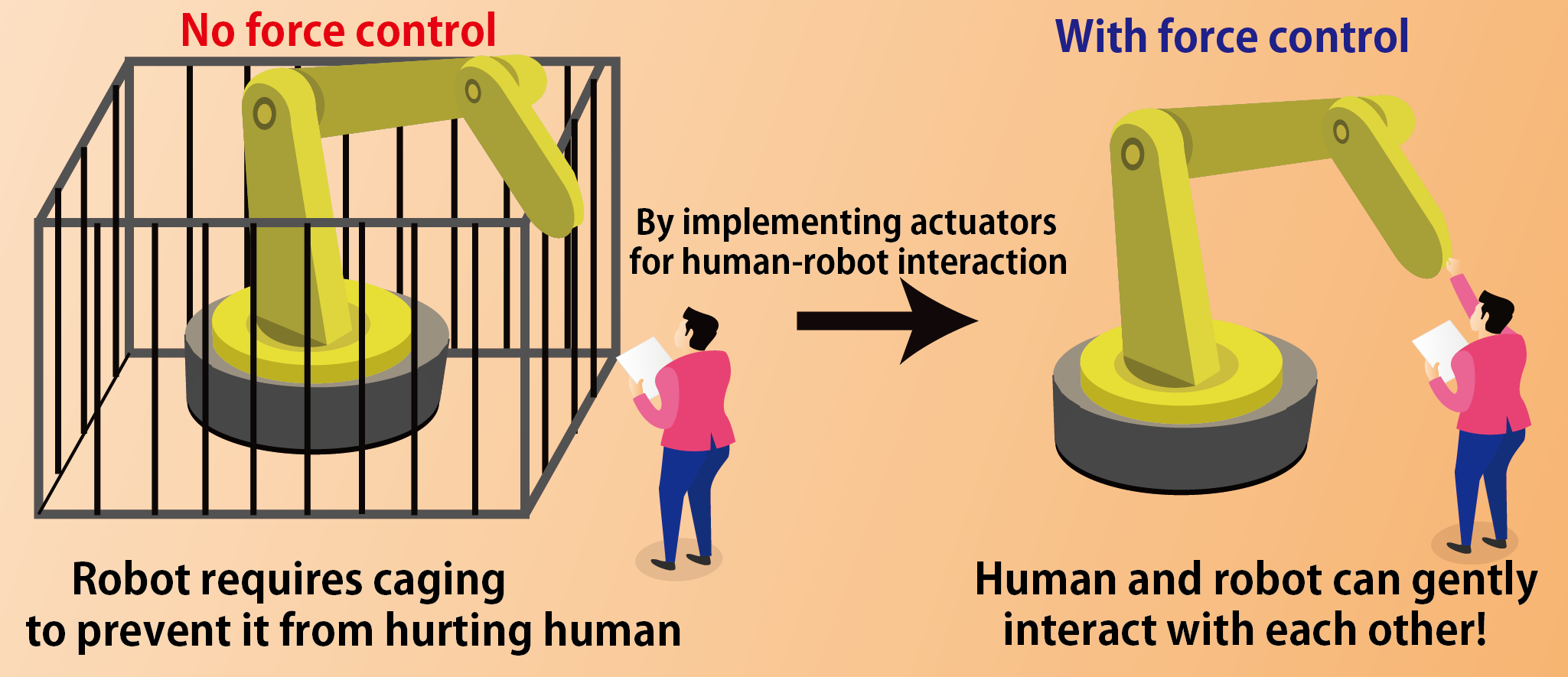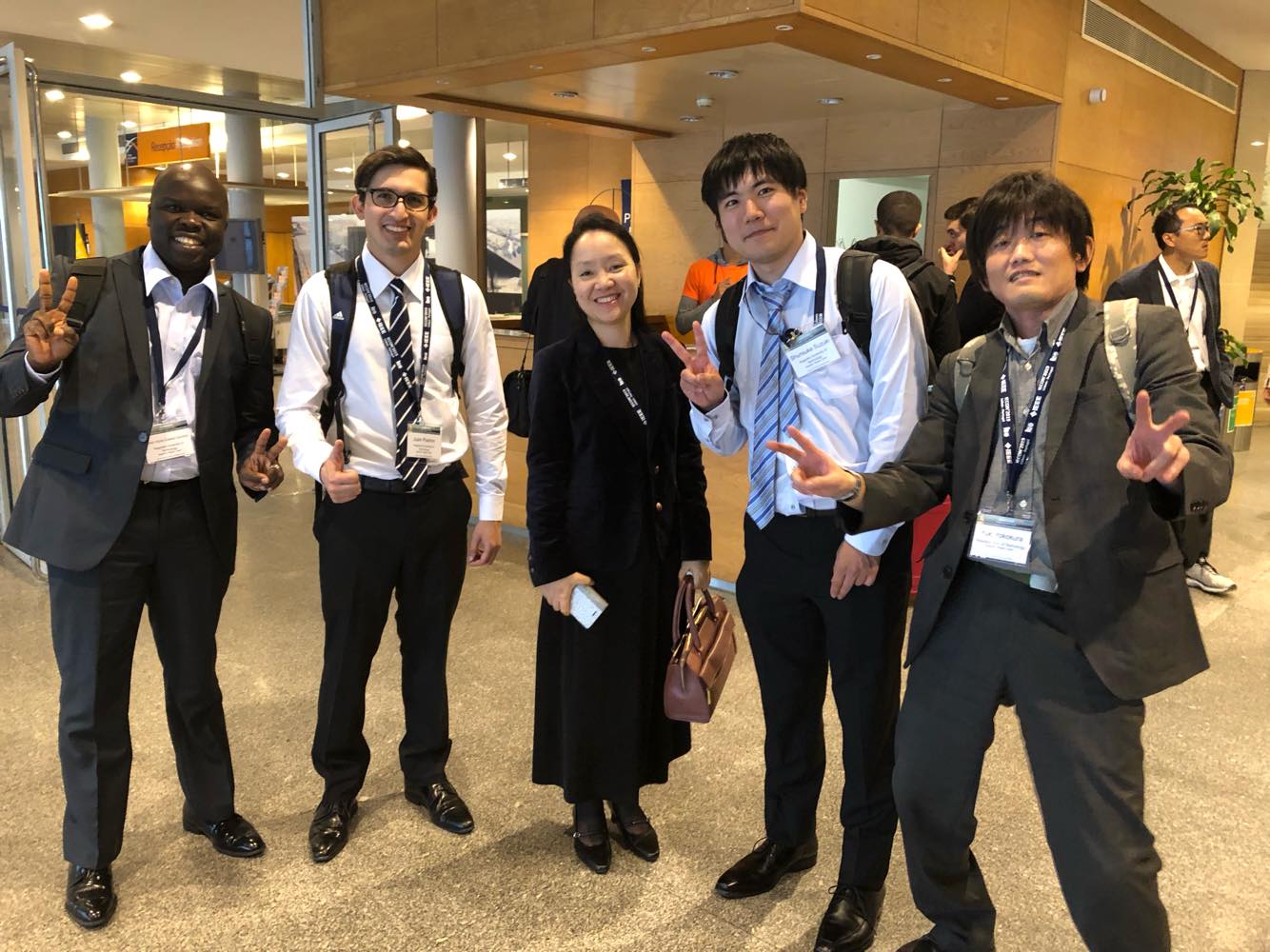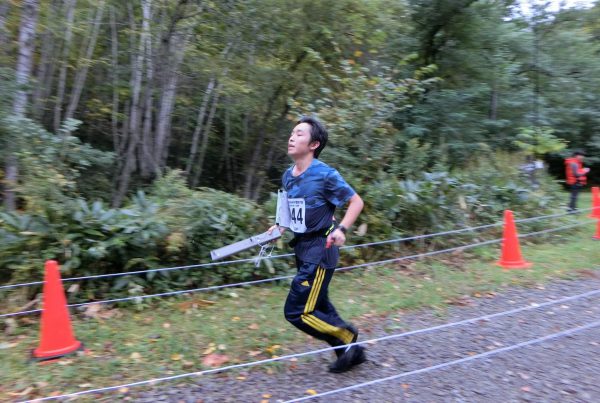Japan has, for many years, been a leader in technology and innovation in the fields of electronics and automotive. Toyota, Sony, Toshiba, Panasonic have become global brands because of their excellence in the field.
The question of sustaining these industries amidst an aging population, and a scarcity of workers struggling with Japan’s tight immigration policies once again prompted Japan’s innovative spirit. Fear not, robots are here as a solution.
Juan Padron is taking his PhD at the Nagaoka University of Technology (NUT) in Niigata, Japan. Photo credit: NUT
Robots used to be figments of a sci-fi reality. But today, robots are present in fields such as medicine, nursing care, security services, space exploration, disaster response and rescue, to name a few.
This is the field that fascinates Juan Padron, a young electrical engineer who hails from Caracas, Venezuela and is currently a PhD student at the Nagaoka University of Technology. Juan’s research is on the use of robotics and motion control algorithms in the field of safe human-robot interaction, with potential applications in medicine and geriatric care.
Aging as a human reality
The United Nations projected that by 2050, 1 out of 6 persons will be over 65 years old. “This means,” Juan explains, “that 16% of the population will need some kind of assistance in their daily lives, mostly physical.”
Juan’s research focuses on the development of robotic actuators capable of precise force control which is a very important factor in building robots that can gently interact with humans. Although the science of robotics has advanced in the past ten years, much research and development is still required to achieve this intelligence and high level of gentle and refined interaction.
Juan and his inspiration
Juan was exposed first hand to the difficulties of aging and the problem of remaining functional. His grandmother passed just a few month ago. However, before her demise, she had already lost her mobility and she could no longer move around.
“It was a very difficult situation. Due to the economic situation in Venezuela, my family members had to immigrate to the USA and Spain. It was very hard for us to find someone to care for my grandmother,” he narrates.
Juan believes that it is in these situations, robotics could provide a solution in assisting the immobile or the fragile elderly to gain more independence through the help of robots. It is common knowledge that the elderly are vulnerable to falls which can be either fatal or can cause cerebral hemorrhage, a comatose condition, paralysis, fractures and extreme pain. Robots would be a welcome help in assisting the elderly.
Juan’s field of research
“Being a PhD student in Nagaoka University of Technology (NUT) can be very challenging,” he says. NUT is one of the two Universities of Technology in Japan focusing on technology, the other one being Toyohashi University of Technology in Aichi.
For his research, Juan has been working on mathematical algorithms applied to motors and robots. He also does most of the software. Juan explains the process, “Usually, when you’re building a robot, you actually use springs or dampers to control the mechanical properties of the robot. These mechanical properties can also be controlled by modifying and manipulating the software. This is what we do in the motion control laboratory.”
This process includes embedding the Simulink software into MATLAB. This program is used for the simulation of dynamic systems in cars, missiles and robots. For Juan, it is interesting to see how something as abstract as mathematics can be applied to actual situations such as the creation of a robot.
The NUT Experience
Juan feels that his experience in NUT has been incredible in terms of research. He has matured a lot as a researcher and has learned to adapt an exacting, rigorous approach in calculations and statistics in engineering down to the most minute detail. He has also learned to deal with the Japanese inquiring mind sometimes called “The Five Whys Framework”—why, why, why, why and another why.
He says that in Venezuela, after the calculations and if the values work, you just go and build it. Here in Japan in an academic setting and in conferences, you are subjected to so much scrutiny, so many whys that you need to answer, to prove, and to validate.
Although, the Japanese education especially for the sciences is rigorous and strives for perfection, Juan feels a sense of freedom. He has the freedom to research on anything he wants and he is also free to take any subject that interests him. This system has allowed him to take subjects like applied mathematics and modelling on top of the subjects on control which is directly related to his research on robotics.
The self-directed style of education hones one’s independence but there is also mentorship and guidance. In terms of research and his work in the motion control laboratory, Juan has to submit weekly reports to professors.
“Those are the times when you actually get the right direction for your research. The professor gives you feedback—that the analysis was not good, do it this way, try something else,” he explains.
“I must admit that the research has been a very free environment although you always need the feedback from the professors,” he reflects.
Juan realized, during his road to pursuing his PhD, that you cannot do your research alone. He realized the value of collaboration. “You have to collaborate with other persons, and get feedback and help from others. This experience proved to me that research is really a collaborative process,” he adds.
In the process of collaboration, communication also becomes necessary skill. Juan realized that an individualistic, solitary approach to learning was counterproductive. He discovered that the more he discussed issues and his research with other student researchers and professors, the more he learned and progressed in his own research. He came to the conclusion that he should never be ashamed of asking questions. In the process, he has also learned the intricacies of the Japanese language, the protocols for respect which are necessary in dealing with the academic hierarchy and professors.
Juan, like the turtle in the fable of the turtle and the hare proves to us that flash and initial brilliance do not define the winners. In the end, those who succeed in life especially in a challenging field like science, are those who embody persistence, patience, perseverance and a determined spirit – and Juan is an amazing, shining example.

